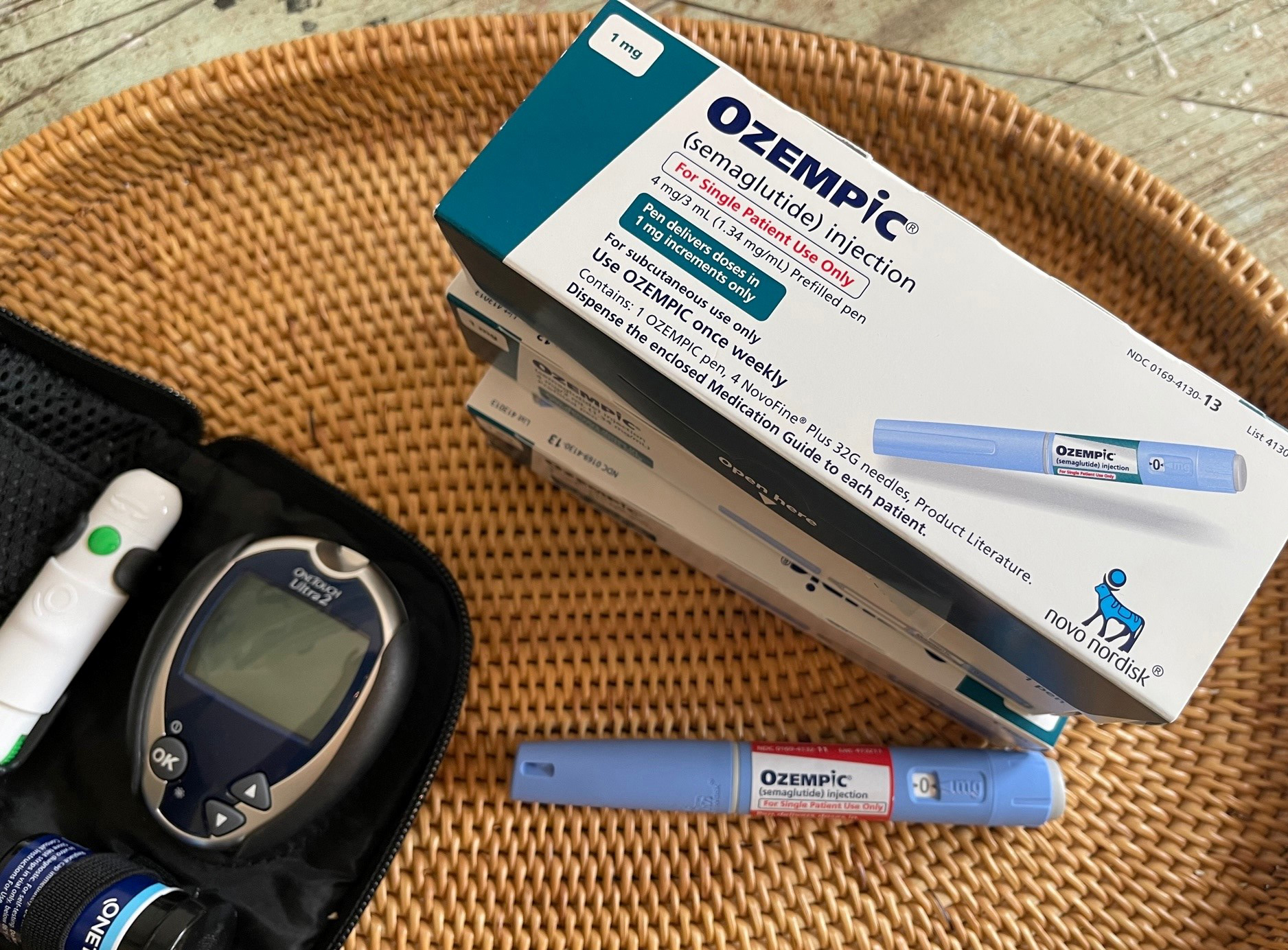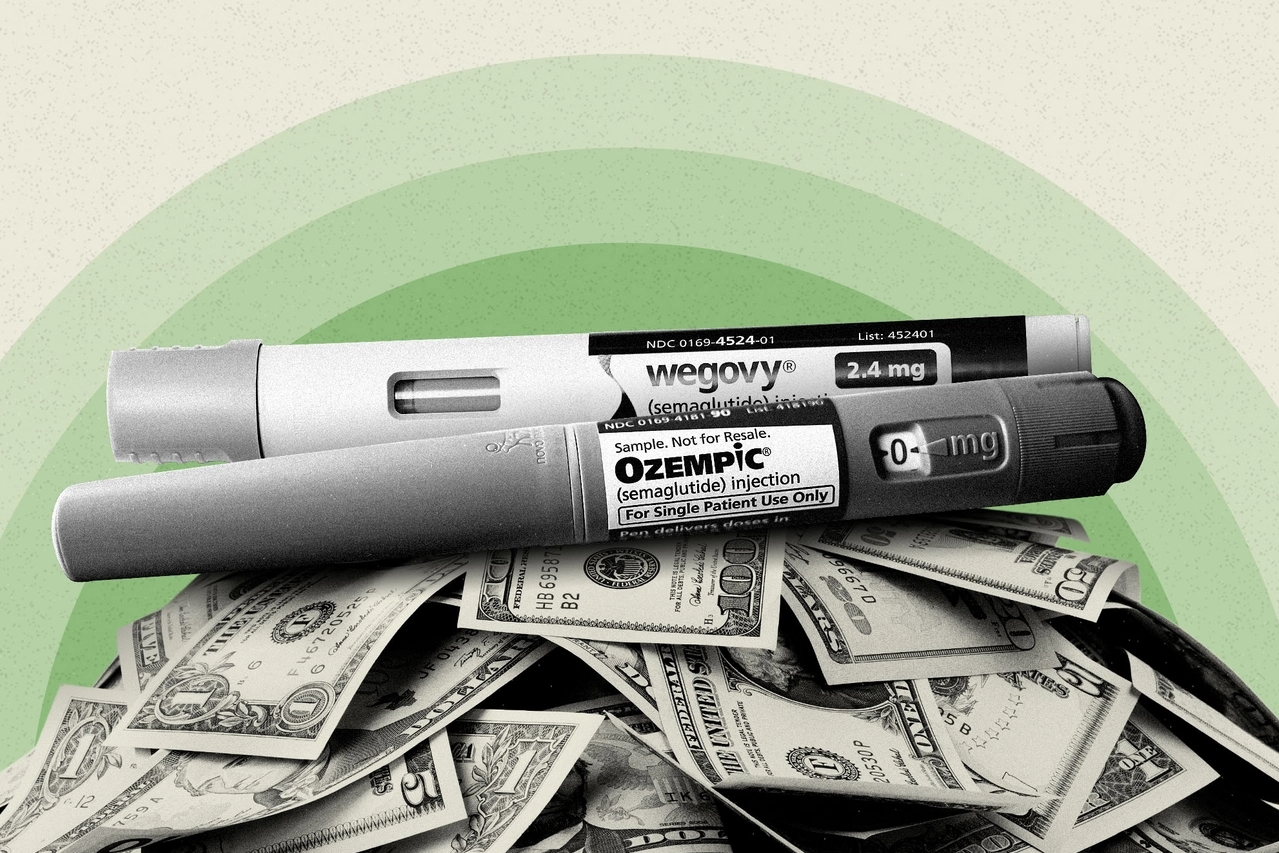It’s no secret that people love transforming themselves. Ozempic has managed to make its way into the pharmaceuticals industry as a weight loss “wonder drug” that has caught the attention of many…but it can do a lot more than just cause weight loss.
Wall Street believes that Ozempic has enough power to create a stock market boom like we’ve never seen before. According to the experts, these are the industries that benefit financially from the Ozempic craze the most.
What Is Ozempic, Exactly?

Ozempic is known as a GLP-1 drug that was first commonly used for patients living with diabetes. It helps many to keep their blood sugar low, and encourages insulin production in the process.
However, an unintended side effect of this process is weight loss — making it a fast-fad drug that many have used to lose weight quickly.
How Popular Is Ozempic?

The parent company of Ozempic (Novo Nordisk, based in Europe) makes two primary weight-loss and diabetes drugs: The aforementioned Ozempic and Wegovy. The company is currently valued at $452 billion dollars.
Data from Business Insider confirms that the rapid company growth has been shown to directly impact the country’s interest rates and currency value.
How Could Ozempic Change The Consumer Market?

Beyond possible stock market shifts, Ozempic could change the way that consumers are spending money. Instead of expensive food and beverage purchases, for example, people might choose to spend on athleisure and energy drinks, according to Business Insider.
They may also invest in workout gear and tools to attempt to weight-manage on their own and keep the changes they are seeing.
How Many People Are Taking Ozempic?

Analysts are working to calculate drug use across patient types. Recent data from Stifel indicates that 15% of survey respondents said they were taking a GLP-1 drug. They did not specify which need or condition they were medicating for.
About 21% of respondents from the same survey indicated that they would be interested in taking a GLP-1 drug in general.
What Would Happen If Everyone In The U.S. Started Taking Ozempic?

While extreme, asking these types of questions can give you insight into possible market shifts. Stifel statisticians estimate that if everyone in the United States began taking Ozempic, for example, the population would consume 4% fewer calories overall.
This would mean that people spend less money on food, possibly reallocating it to suit their new lifestyles.
Why Would People Eat Less?

Ozempic belongs to a drug class that regulates the production of insulin, and that naturally prompts feelings of satiety. It has also been associated with side effects that can negatively impact appetite, such as nausea and vomiting.
Business Insider estimates that these GLP-1 drugs support weight loss up to 20% of one’s body weight in any given year.
A Few Unexpected Industries Might Get A Surge

Beyond the athleisure and gym sectors, a few more industries are planning for a possible investment surge. Preparations have been fueled by recent data from bodies like Stifel, who have found that those on a GLP-1 drug are 72% more likely to drink energy drinks during the month.
While this doesn’t mean that everyone is going to be grabbing a Red Bull, the spending habits of a local economy can change if enough people participate.
How Much Are People Actually Spending On Healthcare And Weight Loss?

Now that we’ve looked at possible effects, you may be wondering: What are people spending on their personal healthcare plans anyway?
Recent data from the Center for Medicare Services indicates that spending increased, both from insurance companies and out-of-pocket payments — which rose by 5.8% and 10.4%, respectively. Overall, consumers spent about $4.4 trillion dollars in 2022 alone.
Healthcare Is Putting (Other) Healthcare Out Of Business

The “Ozempic effect” isn’t limited to economic effects alone. It’s also affecting other healthcare sectors in a horizontal sense as well.
For example: CPAP production companies experienced a 40% market value loss once Ozempic hit the market, as weight loss can increase the quality and health of one’s sleep. However, this complementary healthcare sub-sect isn’t the only one feeling the Ozempic effect.
Could Diabetes Be A Thing Of The Past?

The popularity of the GLP-1 drug is prompting the question, for many: Could diabetes be a thing of the past?
Investors seem to think so. Companies producing insulin delivery tools have experienced major value drops with the rollout of Ozempic, as early studies indicate that it could help many living with type-2 diabetes reach remission.
The Heart Attack Rate Could Lower, Too

The Ozempic effect could save the lives of those at risk of a heart attack, as well.
Many clinical studies have shown the positive effect of weight loss for those who may experience a heart attack or those who already have. This could save and improve the lives of the 805,000 Americans who experience a heart attack each year, per the New York State Department of Health.
It’s Not All Good News — We Could Wait A While To Truly See The Ozempic Effect At Its Peak

The Ozempic effect is promising. Besides encouraging Americans to shift spending habits and lowering the risk of death for many, it can also stimulate the economy in new ways. JPMorgan has been cited as estimating that the drug class will cross the $100 billion sales threshold by 2030.
Insurance companies may slow this rollout and adoption, however, in an effort to save costs. We may need to wait a while to see the full scope of the Ozempic effect.
